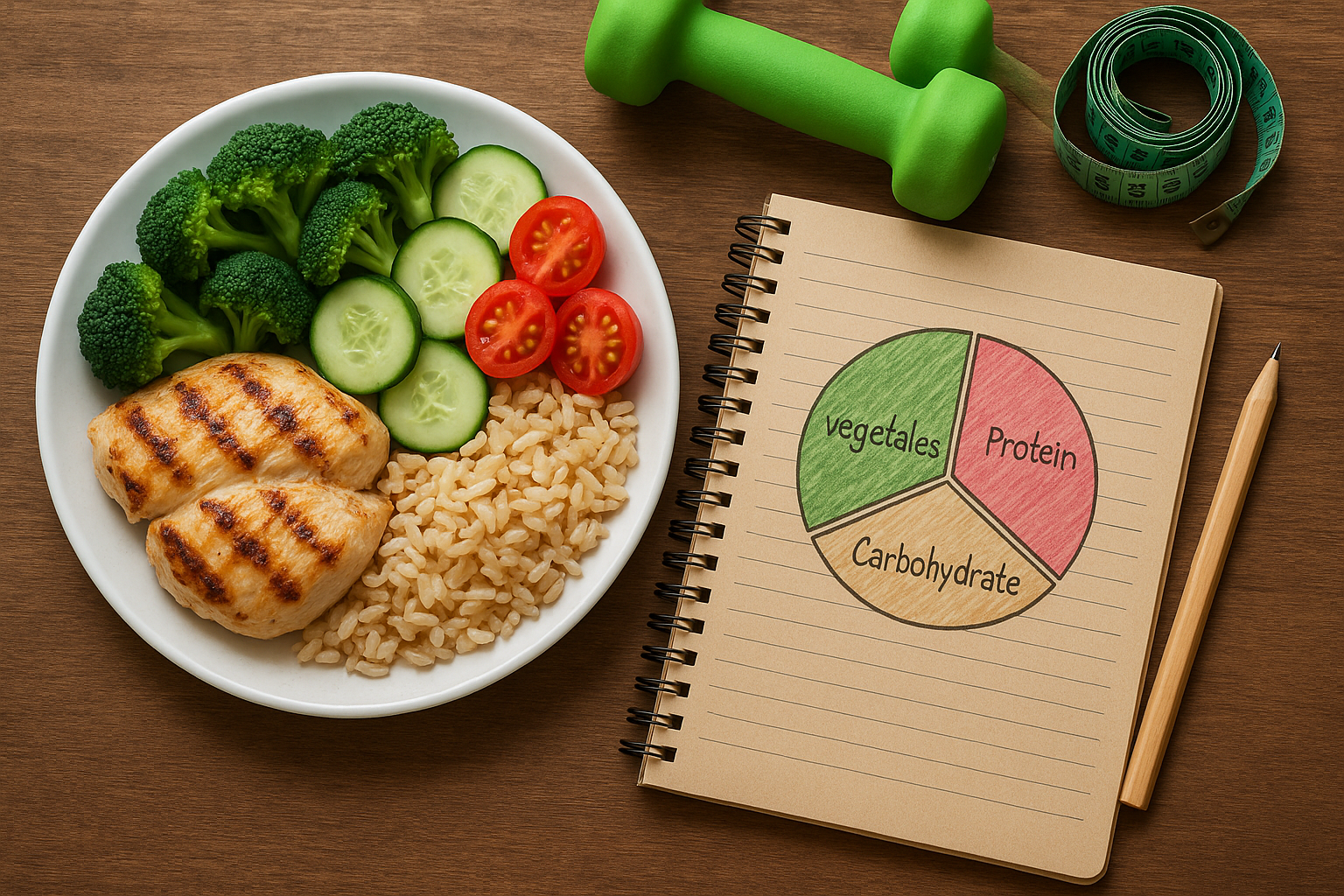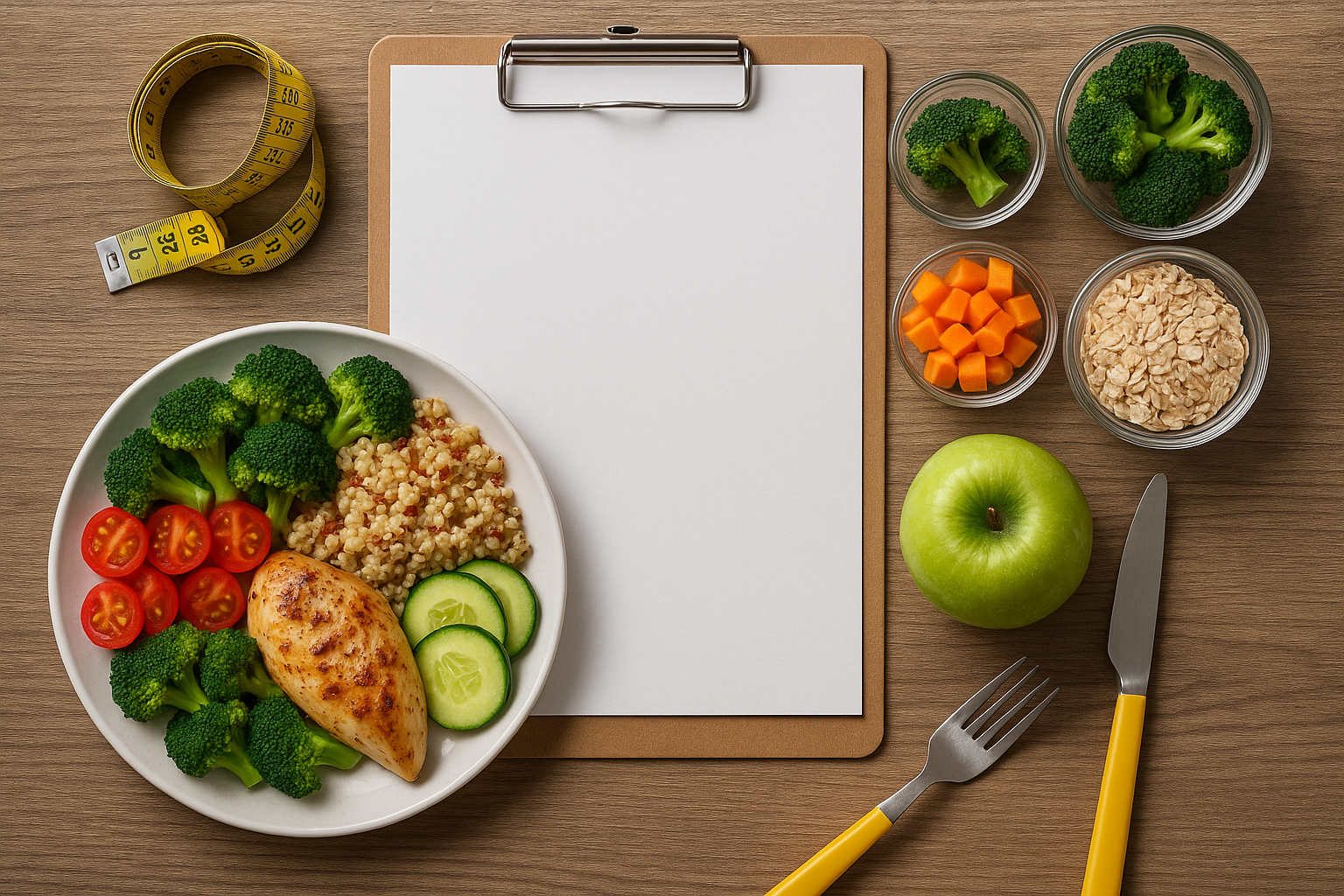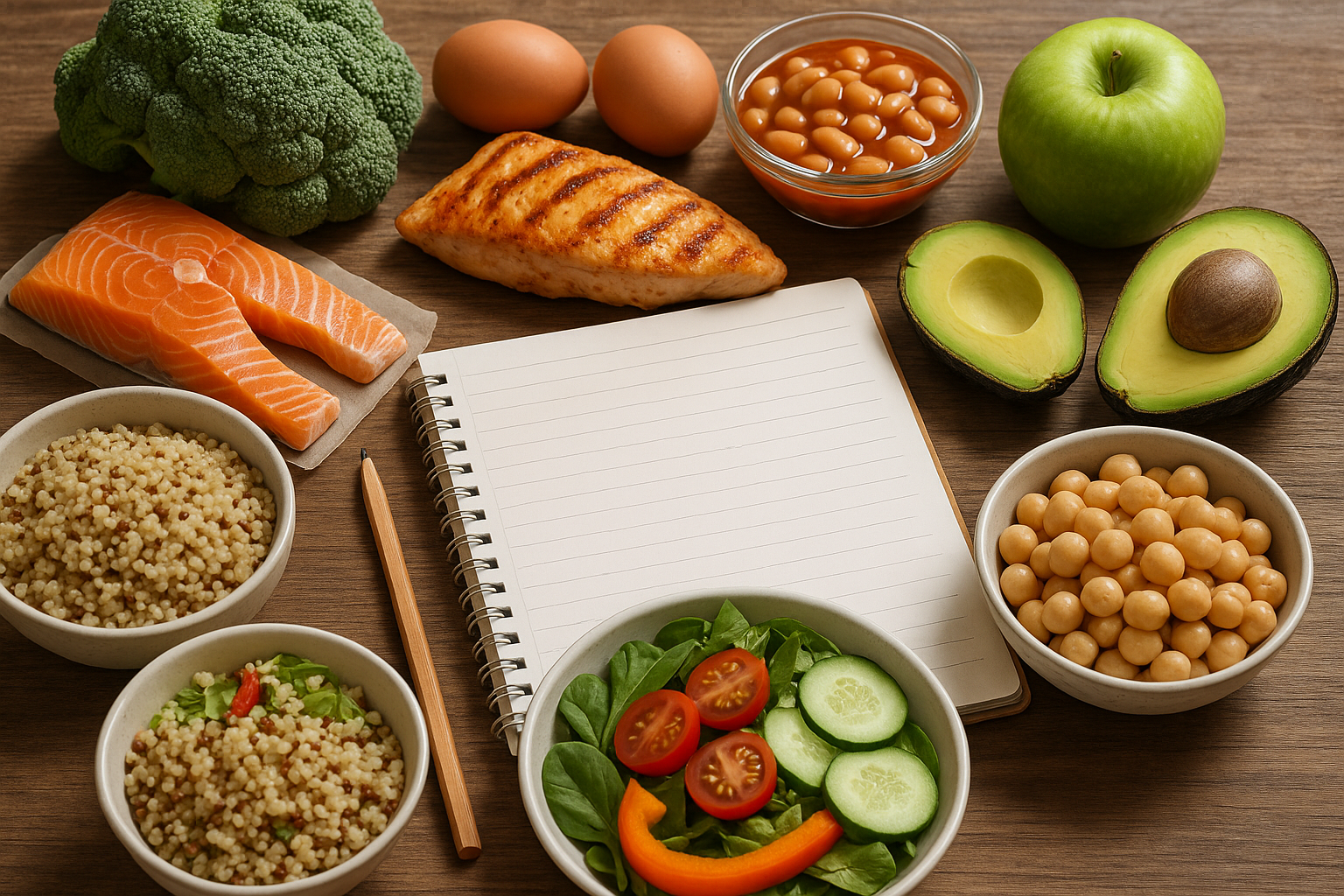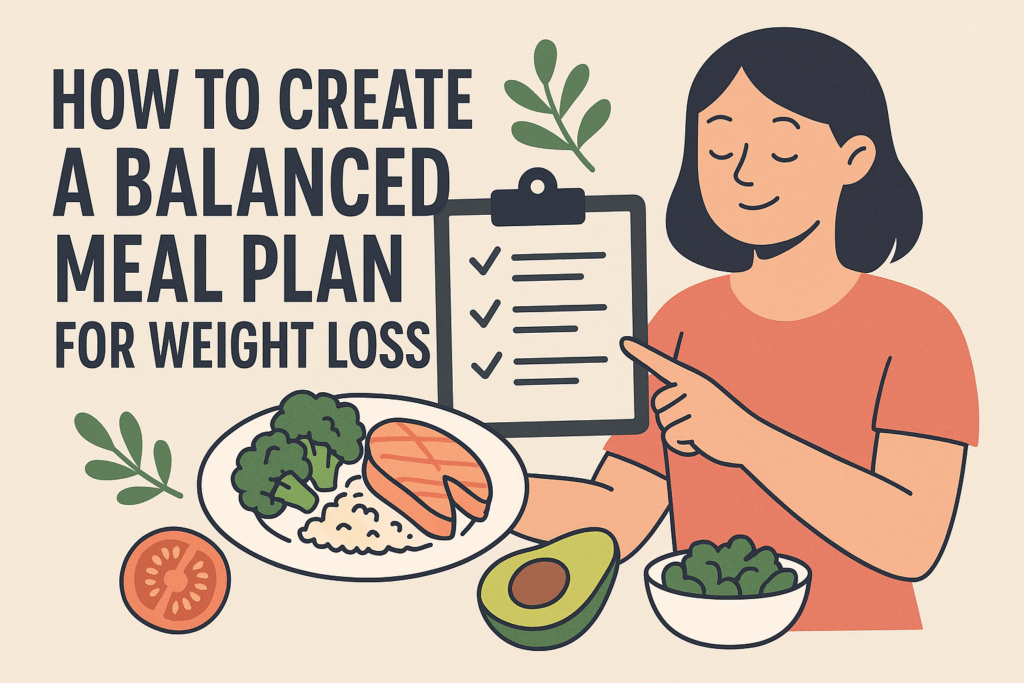Why a balanced meal plan matters
A sustainable approach to weight loss combines a consistent calorie deficit with meals that support hunger control, preserve lean mass, and provide good nutrition. A “balanced” meal plan emphasizes adequate protein, fiber-rich carbohydrates, healthy fats, and plenty of vegetables so you feel satisfied and maintain energy and health while losing weight.
Step 1 — Estimate your calorie target
– Estimate maintenance calories using an online calculator or the Mifflin–St Jeor equation (work with a registered dietitian if you want precise numbers).
– Aim for a moderate deficit: roughly 10–20% below maintenance or about 300–700 kcal/day. A common rule is a deficit of ~500 kcal/day for ~0.5 kg (1 lb) loss per week.
– Do not go below ~1,200 kcal/day for most women or ~1,500 kcal/day for most men without medical supervision. Very low calorie intakes should be supervised by a healthcare professional.
Step 2 — Set macronutrient and fiber targets
– Protein: 25–30% of calories or roughly 1.2–1.8 g per kg body weight (0.55–0.8 g/lb). Higher protein helps preserve muscle and increases satiety.
– Carbohydrates: 35–50% of calories. Focus on whole grains, legumes, fruit, and starchy vegetables rather than refined carbs.
– Fat: 20–35% of calories. Prioritize unsaturated sources (olive oil, avocados, nuts, seeds, fatty fish).
– Fiber: Aim for 25–35 g/day from vegetables, fruits, whole grains, legumes, nuts, and seeds to support fullness and gut health.
Quick portion-visual guide (simple, practical)
– Protein: a palm-sized portion (per meal) for most adults.
– Vegetables: two fists per meal.
– Carbohydrates (grains/starches): one cupped hand.
– Fats: thumb-sized portion (1–2 servings) such as 1 tbsp oil or ¼ avocado.
Meal structure and timing
– Three balanced meals and 0–2 snacks per day often works well; timing should fit your life. Meal timing is less important than total calorie and nutrient intake.
– Distribute protein across meals (e.g., 20–40 g per meal) to support muscle preservation and satiety.
– Include a source of fiber and protein at each meal to blunt blood sugar spikes and keep you full.

Sample meal ideas (estimates for a ~1,500 kcal day)
Breakfast (350–400 kcal)
– Greek yogurt (150 g) + ¼ cup granola + ½ cup mixed berries + 1 tbsp chopped nuts
OR
– 2 eggs scrambled with spinach and mushrooms + 1 slice whole-grain toast + ½ grapefruit
Lunch (400–450 kcal)
– Grilled chicken salad: 100–120 g chicken breast, mixed greens, cherry tomatoes, cucumber, ¼ cup quinoa, 1 tbsp olive oil + vinegar
OR
– Grain bowl: ¾ cup cooked brown rice, ¾ cup black beans, salsa, roasted veggies, 2 tbsp guacamole
Snack (100–150 kcal)
– Apple + 1 tbsp almond butter
OR
– Carrot sticks + 2 tbsp hummus
Dinner (450–500 kcal)
– Baked salmon (100–130 g) + 1 cup roasted Brussels sprouts + ½ cup sweet potato mash
OR
– Stir-fry: tofu (100–150 g) with mixed vegetables and ½ cup cooked basmati rice, 1 tbsp sesame oil
Vegetarian example (1,500 kcal)
– Breakfast: Overnight oats with milk, chia seeds, banana

– Lunch: Lentil and vegetable soup + side salad
– Snack: Cottage cheese or a small handful of nuts with fruit
– Dinner: Chickpea curry with ¾ cup brown rice and steamed vegetables
Grocery list basics
– Proteins: chicken, turkey, fish, lean beef, eggs, tofu, tempeh, Greek yogurt, cottage cheese, canned beans/lentils
– Vegetables: leafy greens, cruciferous veg, peppers, tomatoes, carrots, zucchini
– Fruits: berries, apples, bananas, citrus
– Whole grains: oats, brown rice, quinoa, whole-grain bread/pasta
– Healthy fats: olive oil, avocado, nuts, seeds
– Flavor/building blocks: herbs/spices, vinegar, mustard, low-sodium broth
Meal prep tips to stay consistent
– Plan meals 1–2 weeks at a time and shop with a list.
– Batch-cook staples (grains, roasted vegetables, lean protein) and portion into containers.
– Use versatile ingredients so you can mix-and-match (e.g., roasted chicken for salads, wraps, and bowls).
– Pre-portion snacks to avoid overeating.
– Keep a few quick, healthy staples on hand for busy days (canned beans, frozen vegetables, hard-boiled eggs).
Tracking and adjustments
– Track food can help you learn portion sizes and assess progress for 2–6 weeks. Use a food app, photo diary, or simple journal.
– Expect initial weight fluctuations from water and glycogen. Focus on long-term trends (weekly averages).

– If weight loss stalls for 2–4 weeks, check for underestimated portions, added calories (sauces/drinks), activity changes, or sleep/stress issues. Reduce calories modestly (100–200 kcal) or increase activity.
– Re-assess every 6–12 weeks and adjust targets as your weight and activity level change.
Behavior and lifestyle strategies
– Prioritize sleep (7–9 hours) and stress management — both affect hunger hormones and food choices.
– Drink water regularly; sometimes thirst is confused with hunger.
– Use mindful eating: slow down, eat without distraction, and stop when comfortably full.
– Allow occasional treats in controlled portions to increase long-term adherence.
Dining out and social eating
– Choose grilled/roasted proteins, ask for sauces/dressings on the side, choose vegetables or salad as a side.
– Focus on portions: consider sharing a dish or boxing half to-go before eating.
– Plan for social events by adjusting earlier or later meals to accommodate a larger meal without blowing your daily calories.
Special considerations
– Vegetarians/vegans: Emphasize legumes, soy products, seitan, quinoa, nuts, and consider fortified foods or supplements (e.g., B12).
– Food allergies/intolerances: Replace allergens with nutritionally comparable foods (e.g., dairy → fortified plant milk).
– Medical conditions or pregnancy: consult a healthcare provider or registered dietitian before making major calorie changes.
When to consult a professional
– If you have complex health conditions (diabetes, thyroid disease, eating disorder history), are pregnant/breastfeeding, or need help setting realistic goals and meal plans, work with a registered dietitian or your healthcare provider.
Final notes on sustainability
The best meal plan is the one you can follow long-term. Prioritize nutrient-dense foods, satisfaction, and flexibility. Small consistent changes—improving meals, managing portions, and building habits—lead to sustainable weight loss and better health.

